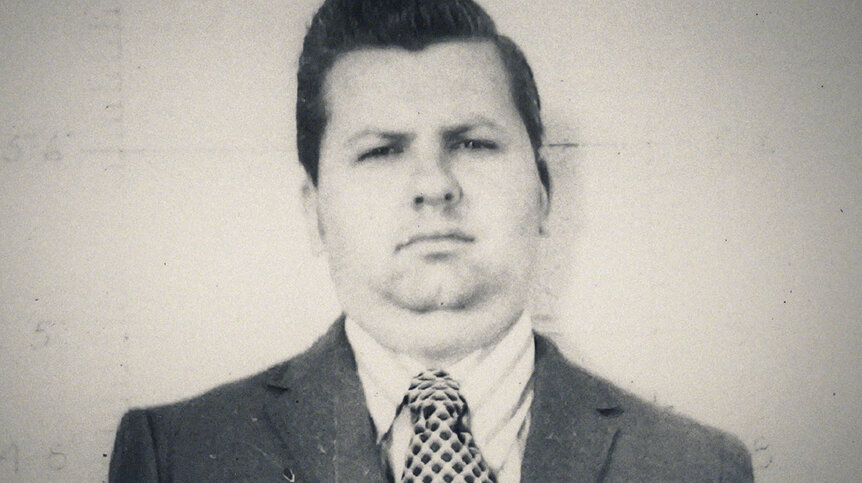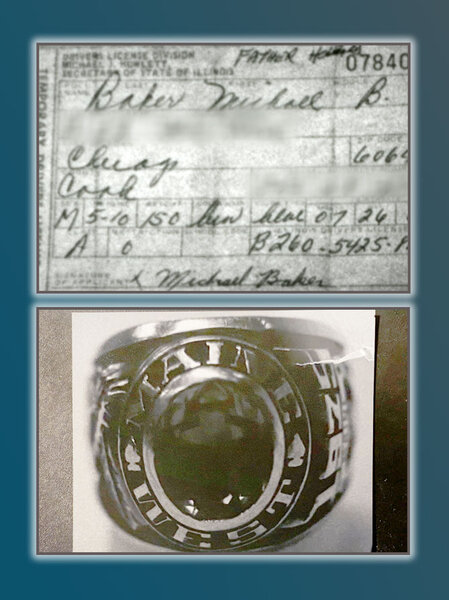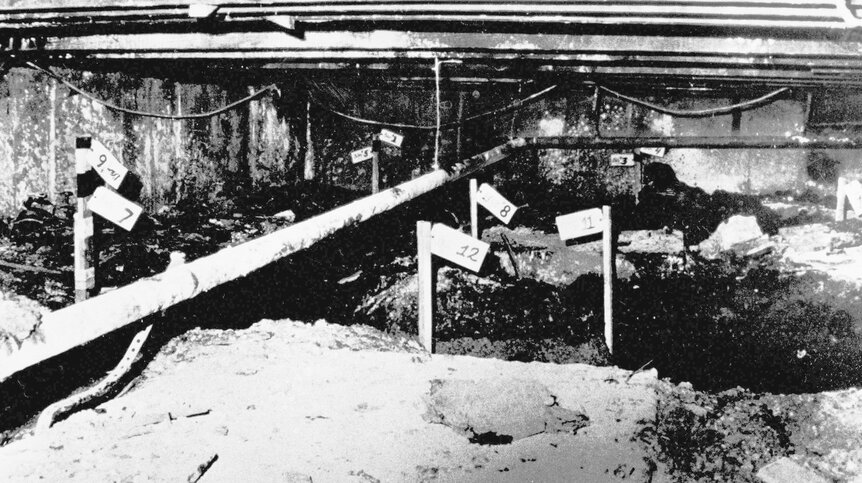Create a free profile to get unlimited access to exclusive videos, breaking news, sweepstakes, and more!
The Evidence That Helped Put 'Killer Clown' John Wayne Gacy Away For Good
When authorities searched John Wayne Gacy's home in 1978 in connection with the disappearance of 15-year-old Rob Piest, they came across shackles, a high school class ring and a pair of driver's licenses that didn't belong to Gacy.

John Wayne Gacy’s murder spree is infamous. The serial killer, who moonlighted as a party clown, took the lives of 33 young men and boys between 1972 and 1978, burying the vast majority in the crawl space under his Chicago-area home.
As explored in Peacock’s new six-part docuseries “John Wayne Gacy: Devil in Disguise,” available now on the streaming platform and airing on Oxygen on Friday, June 18 and Saturday, June 19 from 9-11:30 ET/PT and Sunday, June 20 from 8-10:30 ET/PT, Gacy typically preyed on the vulnerable — young victims whose disappearances were initially explained away by authorities as runaway cases. His contracting and construction business, PDM Contractors, also served as a convenient hunting ground, as he could lure young potential victims with the promise of a well paying job.
It was the disappearance of 15-year-old Robert Piest in 1978 that put the authorities on Gacy’s trail and ultimately led them to uncover crucial pieces of evidence that would soon reveal the horrifying scope of Gacy’s depravity.
Piest, an honor student, was set to go home after working an after-school shift at a pharmacy in Des Plaines, Illinois on Dec. 11, 1978. His mother was waiting for him in her car as he wrapped up work when he told her that he wanted to talk to a man about a possible contracting job. That was the last time she saw him alive.
Investigators were soon able to learn the identity of that contractor — John Wayne Gacy — and questioned him about the teen’s whereabouts. They also learned of Gacy’s previous conviction in Iowa for sexually abusing a teen boy, for which he was currently on parole, and knew they needed to scrutinize him further. On Dec. 13, authorities executed a search warrant at Gacy’s Des Plaines home. While they didn’t find Piest, they did come across some other alarming items.
Up in the attic of the home, officers found shackles and handcuffs. Later, investigators would learn that Gacy used handcuffs as a way to incapacitate his victims before attacking them. Taking advantage of his side gig dressing up as a clown for charity, Gacy would tell some victims that he wanted to show them a magic trick using handcuffs.
As the new docuseries explains, Gacy would handcuff himself and then swiftly free himself. Under the guise of teaching his victims the secret to trick, he would shackle them, but for many, there was no escape. The trick, he would explain to these captives, was to have the key.
In one jarring case, Anthony Antonucci, then a 15-year-old who worked for the killer’s contracting firm, said that Gacy visited him at his home in July 1975 while his parents were away. The two watched an adult movie and then, at some point, Gacy wrestled the teen to the ground and cuffed him. Antonucci recalled in the docuseries that Gacy briefly left the room, at which point he noticed that the cuff on his right wrist was loose and managed to painfully slip it off. When Gacy returned, Antonucci, a member of his high school wrestling team, managed to turn the tables on Gacy, pinning him and applying the handcuffs. Impressed, Gacy told him, "Not only are you the only one who got out of the cuffs, you got them on me," Antonucci recalled. Unsure of what to do next, the teen eventually let Gacy go.
During their search of Gacy’s home, investigators also found a class ring from Maine West High School, which did not belong to Gacy. Investigators would later realize that the owner was missing teen John Szyc who vanished in January 1977 at age 19. Szyc’s body was later found in Gacy’s crawl space, though he was not identified until 1979 through an analysis of dental records. Investigators initially believed that Szyc had simply skipped town to start a new life, much to the frustration of Szyc’s family, who were certain he wasn’t a runaway.
In a trash can located in Gacy’s kitchen, investigators found a photo processing receipt from the pharmacy where Piest worked. Piest’s mom had gotten film developed at her son’s workplace and placed the receipt for it inside her son’s parka, Piest’s sister wrote for Harper’s Bazaar in 2018. The receipt had the mother’s name on it, according to her account. According to other accounts, the receipt was put in his parka by a pharmacy coworker, who’d borrowed it when she went outside for a break. In any event, the receipt linked Gacy to Piest, who he'd killed and dumped in the Des Plaines River.
But, most of the victims were buried in the crawlspace under Gacy's home. Gacy employed two of his PDM workers — David Cram and Michael Rossi — to dig trenches under his home, supposedly to fix a drainage issue. But their real purpose was to function as graves.
The stench emanating from the bodies was powerful, however, and played a critical role in uncovering Gacy’s crimes. While he was under police surveillance in the Piest case, Gacy brazenly invited two officers into his home to warm themselves from the December chill. Des Plaines officer Bob Schultz took Gacy up on his offer to use his bathroom, and while he was in there, the heat kicked in, bringing with it a noticeable smell.
"That odor from the heat, from the crawl space," former Des Plaines officer Mike Albrecht recalled to WMAQ-TV in 2018. "Bob said right away, it smelled like a morgue!"
Those key pieces of evidence – the class ring, the photo receipt, and the officer’s testimony about the stench of human remains – became crucial to obtaining a second search warrant for Gacy’s home, which was executed on Dec. 21, 1978. In Gacy’s crawl space, investigators found the first sets of human remains and over the course of the next eight days, the full scope of Gacy’s horrific murder spree became known. Crowds of people gathered outside Gacy's home as investigators kept uncovering more bodies.
Gacy was tried and convicted for 33 murders in 1980 and was sentenced to death. He was executed by lethal injection on May 10, 1994.
Watch "John Wayne Gacy: Devil in Disguise" now on Peacock. You can also catch the six-part series on Oxygen on Friday, June 18 and Saturday, June 19 from 9-11:30 ET/PT and Sunday, June 20 from 8-10:30 ET/PT.
[Photos: Peacock, Getty Images]






























